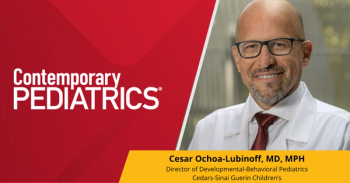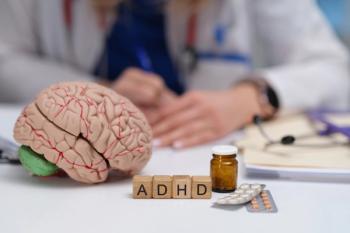
Treatment Landscape for Pediatric ADHD
Robert L. Findling, MD, MBA, and Timothy Wilens, MD, provide an overview of available treatment options for patients with pediatric ADHD.
Episodes in this series

Robert L. Findling, MD, MBA: Let’s talk about medicines. Obviously, not all medicines are the same. Can you give us a sense of the forest? There are tons of medicines. Can you put it into bite-size chunks for folks to get a sense of the landscape?
Timothy Wilens, MD: Sure. One of the easiest bifurcations is to think about stimulant medications and nonstimulant medications. Among the stimulant medicines, you have what I call brother-sister medicines. You have methylphenidate-class agents and amphetamine-class agents. The good news is that we have lots of stimulant preparations. The bad news is that it’s a little tougher to distinguish among them. If you’re in the field, it can get pretty complicated to differentiate which is which. To give you a sense, within methylphenidate, there are now 15 different preparations available. With amphetamine, there are 10. There are a lot of ways to think about it.
Stimulants largely differentiate themselves based on how long they act, their duration of action, and their adverse effect profiles, which are pretty similar. But some differ based on duration of action. The other class of medicines that work for ADHD [attention-deficit/hyperactivity disorder] are the nonstimulant medicines. Of those that are FDA approved, you have atomoxetine; alpha agonists, which include clonidine and guanfacine; and viloxazine XR [extended release]. These are the major classes of medications that constitute the armamentarium for ADHD.
Robert L. Findling, MD, MBA: When you’re seeing patients of different ages—we’re talking about preschoolers, school-age folks, and teenagers—what are your thoughts or approaches regarding treatment selection? Because for a lot of folks—myself included—that drives things.
Timothy Wilens, MD: A lot of people ask that question. One of the first early considerations is whether the person has a lot of co-occurring disorders. If they have a lot of issues with anxiety or mood, or you’re working with an adolescent with substance use, that’s going to shift you in one direction. But for the vast majority of individuals, the market data show that stimulants are almost always your first-line treatments of choice. For uncomplicated ADHD, you’re going to go with stimulants. Because as James Swanson always used to say, it’s hard to beat a stimulant. People generally default to them because they’ve got the biggest effect size, meaning more people respond to them, and they respond more robustly compared with nonstimulant medications.
Within the methylphenidate-vs-amphetamine argument, older data show that equal subgroups prefer either methylphenidate or amphetamine, and most do fine with either. Which one you start with is up to you. They’re all approved. I tend to start with methylphenidate-class agents because I find them to be a bit kinder and gentler than amphetamine products. Amphetamine products probably work a little better, but they have a few more adverse effects associated with them. It comes down to things like personal choice and a discussion regarding where the child is at.
Robert L. Findling, MD, MBA: The only other thing I’ll add is that sometimes we’ll get a story from a family member that their cousin did something with one vs the other. I don’t know of any fancy studies, but because ADHD is hereditary, if a sibling or a cousin does well with one and doesn’t do well with the other, that feels like a rational way to think it through. Of course, insurance coverage matters a lot.
Timothy Wilens, MD: It really does. You’re almost obligated to use generic preparations first because of that. I don’t start with immediate-release necessarily. I start with what I consider the appropriate duration for the age. If it’s a very young child, I start with immediate release. But if it’s a 15-year-old, I’m probably starting with an extended-extended release. If it’s a 10- or 12-year-old, I’m going to use intermediate-duration medication. Generic doesn’t necessarily mean immediate release. That’s important because we appreciate that ADHD is there through the day, and it’s a burden on school systems and children to have them re-dosed in school or by parents if they’re at home. If possible, we try to not have that happen, and we’ve been successful. There are so many good preparations out there that you don’t need to do that anymore.
Robert L. Findling, MD, MBA: You and I are of an age…when everybody had to visit the school nurse. Thankfully, those days are gone.
Transcript edited for clarity
Newsletter
Access practical, evidence-based guidance to support better care for our youngest patients. Join our email list for the latest clinical updates.











